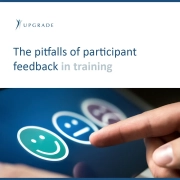The pitfalls of participant feedback in training 🔊
The pitfalls of participant feedback in training 🔊
In the sales industry, feedback sheets are still used as the preferred method to draw conclusions about the quality of the training conducted.
Unfortunately, it is a fallacy that the instruments ironically called “happiness sheets” 😀 provide a meaningful evaluation of the actual training success.
Although feedback from participants is important in terms of acceptance of the training measures, positive feedback does not necessarily mean that what has been learned will be put into practice. Especially since the feedback is usually obtained directly at the end of the training and the practical suitability has not yet been proven.
In addition, there are the following influencing factors:
◾ The initial euphoria and motivation increase the impressions.
◾ Not everyone can communicate their opinions openly.
◾ Because of the group dynamic, people do not want to disagree.
◾ Positive feedback avoids possible conflicts with the trainers.
◾ Experienced trainers might consciously influence the group’s mood.
Therefore, even positive feedback can actually be a distorted representation of actual perception. Valid statements about the training effects are needed in order to justify the expenditure of resources in relation to the benefits. ⚖
So what to do❓
Against the background of the pitfalls mentioned above, we have developed our methodological toolkit called >> Training Effectiveness Analysis << (TEA).
It provides you with a software-based analysis 🤖 of the before and after comparison of the training carried out. The dimensions to be considered can be determined individually, and the use and effort always follow our guiding principle of practicable feasibility.
We would be happy to develop an individually tailored learning and development process for you.
👉 Contact us!
⏩ www.upgradegroup.com/kontakt ⏪
#BusinessDevelopment #ChangeManagement #Feedback #TrainingEffectivenessAnalysis #UPGRADETraining #SalesTraining










